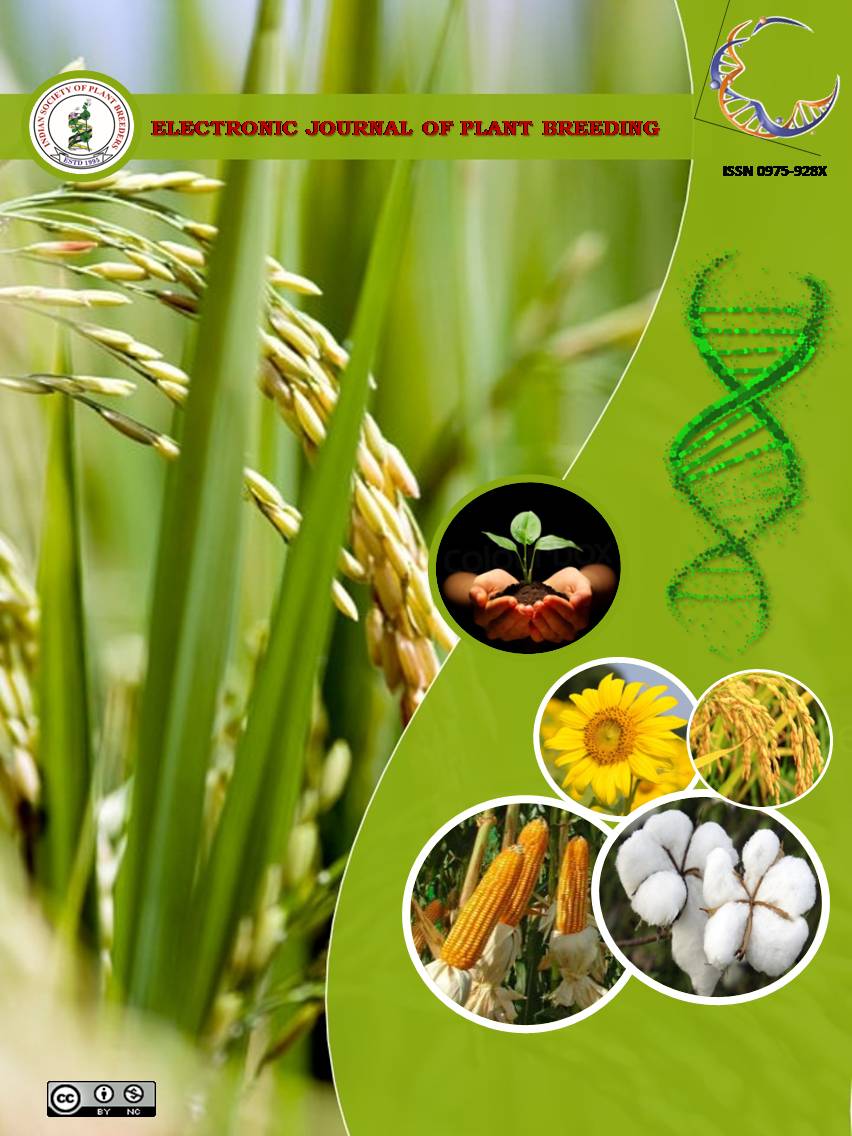Genetics of awnness in the F2 population of basmati crosses of rice
Abstract
The present investigation was conducted to study the gene action of awn character in rice. Hybridization was done between four female parents’ viz., ASD 16, ADT 37, MDU 6 and TKM 13 with one male parent viz., Improved Pusa Basmati 1. All the female parents are awnless, but the male parent is awned. F1 of all the crosses except ADT 37 × Improved Pusa Basmati 1 exhibited awns. This result indicated that awn character was controlled by dominant gene in those three crosses. In the F1 of the ADT 37 × Improved Pusa Basmati 1, awn expression was suppressed which indicated that suppressor or inhibitor gene may be present in ADT 37. All the F1s were selfed and F2 generation was obtained. F2 population of all the four crosses viz., ASD 16 × Improved Pusa Basmati 1, ADT 37 × Improved Pusa Basmati 1, MDU 6 × Improved Pusa Basmati 1 and TKM 13 × Improved Pusa Basmati 1 were studied to know the inheritance pattern of awnness. Based on chi-square test it was found that inheritance pattern of awnness fit in the ratio of 9:7 (awned: awnless) in the F2 generation of three crosses viz., ASD 16 × Improved Pusa Basmati 1, MDU 6 × Improved Pusa Basmati 1 and TKM 13 × Improved Pusa Basmati 1 and the awn character appeared to be governed by complementary gene action. In the cross, ADT 37 × Improved Pusa Basmati 1 showed a ratio of 7:9 (awned: awnless). The reason for the differences in gene action may be attributed to the presence of two different sets of genes in female parents of the crosses.

It is certified that:
- The corresponding author is fully responsible for any disputes arising due to the publication of his/her manuscript.
- The article has been seen by all the authors who are satisfied with its form and content.
- The sequence of names of authors in the by-line is as per their relative contribution to this experiment, giving due credit to all scientists who made notable contribution to it.
- All the authors fully understand that inclusion of any other co-authors or exclusion of any co-authors is not possible once the article has been submitted to the journal.
- The corresponding author takes full responsibility for this article.
- The address of the organization where the research was conducted is given.
- The article is exclusive for this journal, and the results reported here have not been sent (and will not be sent during its consideration by this journal) for publication in any other journal.
- Authors agree to abide by the objective comments of referees and do agree to modify the article into a short note as per the recommendation, for publication in the Electronic Journal of Plant Breeding.
- If published in Electronic Journal of Plant Breeding, the copyright of this article would vest with the Indian Society of Plant Breeders, who will have the right to enter into any agreement with any organization in India or abroad engaged in reprography, photocopying, storage and dissemination of information contained in it, and neither we nor our legal heirs will have any claims on royalty.


